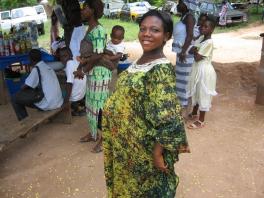 According to the World Health Organization, 1,000 women die from pregnancy-related causes and childbirth every day, and 99 percent of all maternal deaths occur in developing countries. Survival proves just as difficult for the child as well with reports showing nearly 40 percent of all under-five child deaths are among newborn infants. The majority of these deaths occur where access to healthcare is scarce or nonexistent, meaning nearly all of them are avoidable.
According to the World Health Organization, 1,000 women die from pregnancy-related causes and childbirth every day, and 99 percent of all maternal deaths occur in developing countries. Survival proves just as difficult for the child as well with reports showing nearly 40 percent of all under-five child deaths are among newborn infants. The majority of these deaths occur where access to healthcare is scarce or nonexistent, meaning nearly all of them are avoidable.
Women and Children First is a UK-based international development agency working to address these outrageously high levels of maternal and newborn mortality, and its Good Practice Guide: Community Moblisation through Women’s Groups to improve the Health of Mothers and Babies can help others do the same.
The guide emphasizes the importance of community-led strategies to improve their own health services and outlines a participatory approach to working with women’s groups in order to empower them to improve maternal and newborn healthcare at the grassroots level. Based on the organization’s own experiences with projects in India and Bangladesh called Saving Mothers and Children, the guide includes best practices for establishing and organizing women’s groups, success stories, and advice about challenges NGOs may encounter when working at the community level in developing regions.
The Hunger Project’s own vision for the future is one in which all people are empowered to control their own lives and destinies. This Good Practice Guide is designed to do just that by encouraging people to take charge of their own maternal and newborn healthcare services. A shout out to Women and Children First for their goals and strategies for achieving them.
Learn more about THP’s work with maternal health.
Content submitted by THP-intern Marni Salmon.
